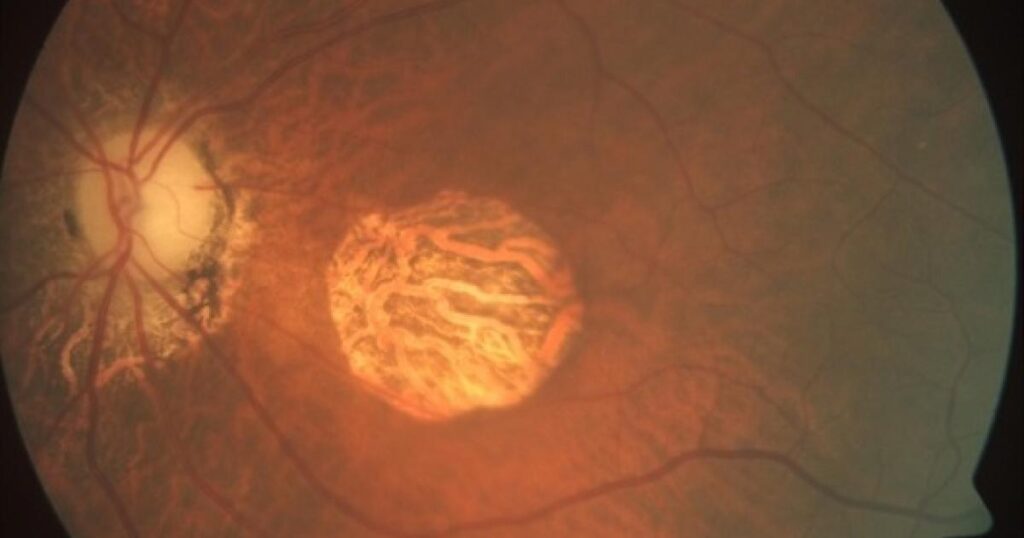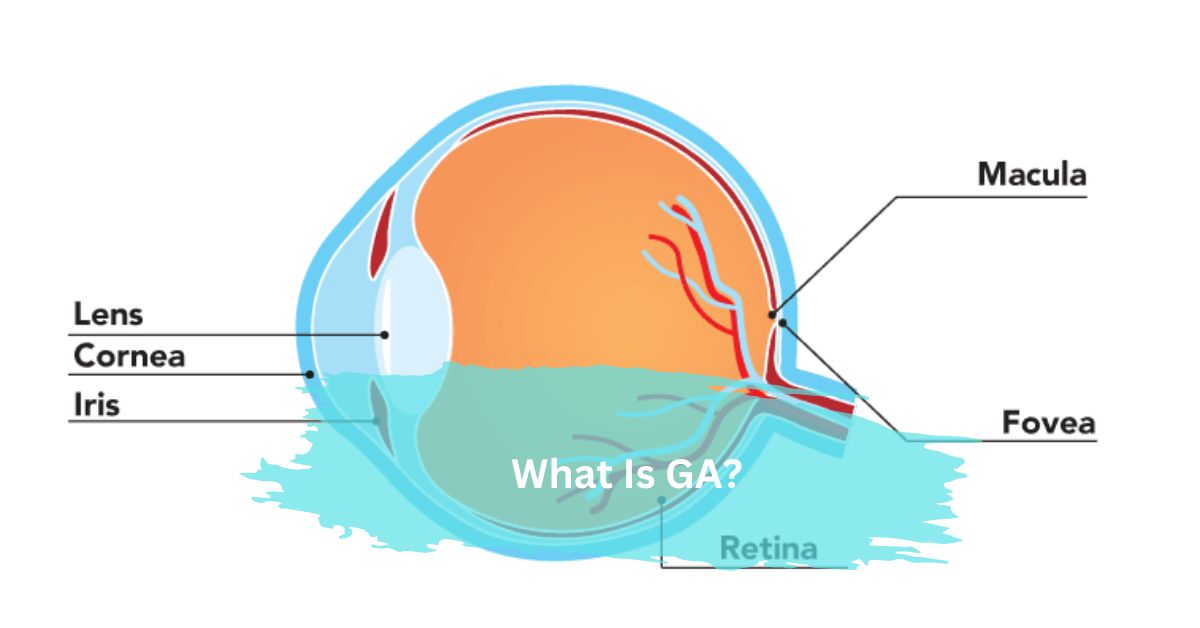What Is GA? – Understanding A Progressive Eye Condition!
Geographic Atrophy (GA) is an advanced form of age-related macular degeneration (AMD), causing progressive central vision loss due to macular cell degeneration. It’s a leading cause of irreversible vision impairment in older adults.
This article will explore all the information about the Geographic Atrophy. Let’s start to know it!
What Is GA (Geographic Atrophy)? – A Brief Overview!
Geographic Atrophy (GA) is a term used to describe a form of advanced age-related macular degeneration (AMD). A chronic eye condition that affects the retina’s central portion, known as the macula.
When someone has AMD, it might progress to GA. In GA, parts of the retina lose cells, causing areas of vision loss or blind spots, usually starting near the center of vision. Because the central vision may remain clear initially, some people might not realize they have GA immediately.
However, GA can lead to permanent vision loss over time. If one eye has GA, the other eye is more likely to develop it too. About 1 million people in the United States have GA.
What Are The Signs And Symptoms Of Ga? – Must Read Them!

As Geographic Atrophy (GA) advances, vision changes may become more noticeable over time. It can lead to gradual vision loss, potentially affecting one or both eyes.
Symptoms of Geographic Atrophy (GA) can include:
- Glare makes it difficult to see clearly.
- Difficulty recognizing people’s faces.
- Trouble distinguishing between different shades of colors.
- Objects need to be more clear and sharp.
- Vision worsens in dim lighting conditions.
- Dark or dim spots develop in or near the center of vision.
- Extra lighting is needed for reading.
- Missing or disappearing numbers or letters while reading.
How can geographic atrophy diagnosed? –
If you’re 50 or older, it’s important to have an eye check-up every one or two years, even if you don’t have vision problems.
During your exam, your doctor may:
- Test your vision: They’ll assess your central vision by having you read from an eye chart and checking how clearly you can see. Similar tests may be conducted to understand vision loss, and both eyes will be tested.
- Perform a dilated eye exam: Your eyes will be dilated using eye drops to allow the doctor to examine the back of your eyes, including the retina and macula. Your eye doctor may also take images to detect Geographic Atrophy (GA), particularly if you already have AMD. These images may include:
- Fundus photographs: These provide a picture of your retina and can serve as a baseline for tracking GA progression over time. Autofluorescence imaging may also be used to aid in GA detection.
- Optical coherence tomography (OCT): This imaging test produces a cross-sectional view of your eye, allowing the doctor to observe changes such as thickening of the macula, tissue loss, or fluid under the retina that could impact vision.
- Fluorescein angiography: In this test, dye is injected into your arm to highlight blood vessels in your eye. Photos of the back of your eye are then taken to identify new blood vessels in the macula and any dye leakage, indicating fluid in or under the retina.
What can you do if you have or are at risk for geographic atrophy?

Currently, there’s no cure for Geographic Atrophy (GA), and treatment options are limited. However, several approaches aim to slow down the progression of the disease and preserve the remaining vision:
- Lifestyle Modifications:
Adopting a healthy lifestyle, including a balanced diet rich in antioxidants, regular exercise, and quitting smoking, may help reduce the risk of AMD and GA progression.
- Nutritional Supplements:
Certain supplements, like vitamins C and E, zinc, copper, lutein, zeaxanthin, and omega-3 fatty acids, have shown benefits for patients with AMD and may help slow down GA progression.
- Anti-VEGF Therapy:
Intravitreal injections of anti-vascular endothelial growth factor (VEGF) agents, such as ranibizumab and aflibercept, have been explored as potential treatments for GA, although results have been mixed.
- Cell-Based Therapies:
Emerging therapies involving stem cell transplantation or RPE cell replacement aim to restore retinal function and stop disease progression in GA patients. However, more research is needed to establish their safety and effectiveness.
- Amsler grid:
This test detects central vision issues by displaying straight lines. Look for changes like difficulty reading or seeing wavy lines. If you notice any, contact your eye doctor immediately. You can do this test daily for each eye.
Risk Factors For Geographic Atrophy – Must Consider!
- Age: GA mainly affects people over 50 years old.
- Genetics: Certain genes can make you more likely to get AMD and GA.
- Smoking: Smoking raises your chances of getting AMD and GA, so quitting is crucial.
- Nutrition: Eating lots of saturated fats and not enough antioxidants and omega-3s can increase your risk of GA.
Frequently Asked Questions:
1. Is Geographic Atrophy (GA) preventable?
No, there is currently no way to prevent GA. However, adopting a healthy lifestyle and managing risk factors like smoking and nutrition can help reduce the risk of progression.
2. Can GA lead to total blindness?
No, GA primarily affects central vision but typically does not lead to total blindness. However, it can cause significant vision impairment over time.
3. Is GA hereditary?
Yes, genetics play a significant role in the development of GA. Specific genetic variants can increase the risk of AMD and GA, making some individuals more predisposed to the condition.
Conclusion:
Geographic Atrophy (GA) is a challenging form of age-related macular degeneration (AMD), causing gradual central vision loss. Although there’s no cure, early detection, and healthy habits can help manage the condition and preserve vision. Ongoing research offers hope for better treatments in the future.
Read:







